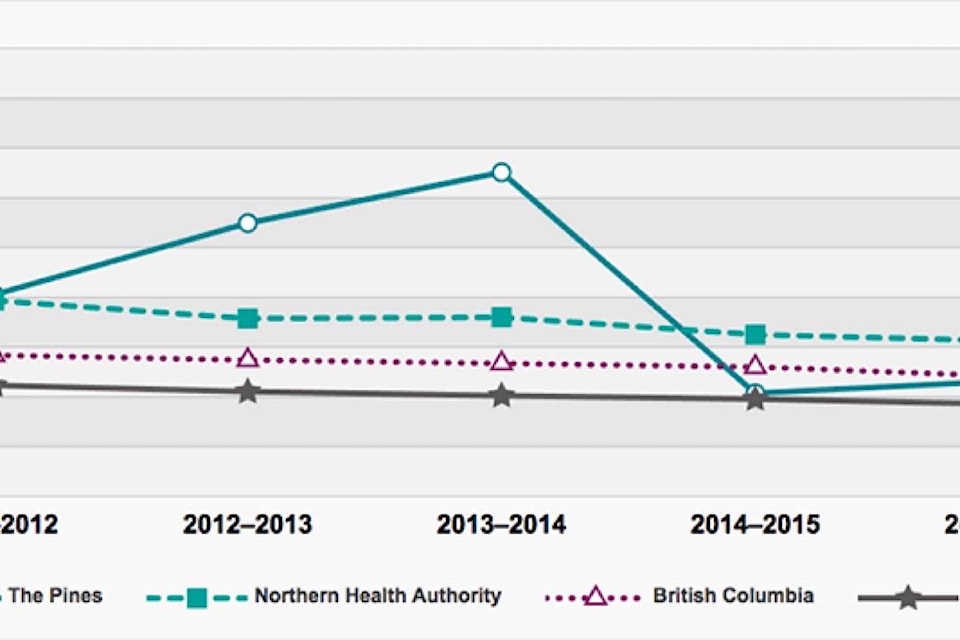The percentage of long-term care residents experiencing moderate daily pain or excruciating pain at any frequency within Northern Health is more than twice the national average.
While the national average in 2015/16 was 8.5 per cent, Northern Health sat at 21.2 per cent, according to the Canadian Institute for Health Information (CIHI).
And while last year The Pines in Burns Lake reported 13.2 per cent, in 2013/14 that percentage was a staggering 55.1 per cent - almost five times the national average of 10.2 per cent. According to Alison Clement, a CIHI spokesperson, high levels of pain compared to other regions are a “flag for further investigation.”
“Experiencing daily or chronic pain, regardless of the stage of life, can have a significant impact on quality of life, mood and functional level, potentially leading to further decline in well-being,” she said.
Although the elderly are more at risk of pain due to a higher likelihood of having pathological or degenerative conditions, Clement says pain is not a normal part of aging.
“A comprehensive pain-management program that includes best practices in both pharmacological and non-pharmacological approaches to reducing pain can contribute greatly to managing pain levels in the elderly,” she said.
Looking at the percentage of long-term care residents whose pain worsened in 2015/16, The Pines sits at 17.5 per cent, well above the national average of 10.5 per cent. Worsening pain can be related to a number of issues, including medication complications or improper management of medication.
According to CIHI, careful monitoring of changes in pain can help identify appropriate treatment, and worsened pain raises concerns about the resident’s health status and the quality of care received.
When it comes to the percentage of residents whose mood from symptoms of depression worsened in 2015/16, The Pines sits at 25.7 per cent, above Northern Health’s average of 14.2 per cent and the national average of 22.3 per cent. Depression affects quality of life and may also contribute to deterioration in activities of daily living and an increased sensitivity to pain.
Clement said that regional health authorities should look at the results from individual homes to see which of these facilities are driving the overall results, and what kind of variation can be seen across the region.
“After that, it’s really about connecting to the homes to try and bring them together to talk about these results and encourage them to share ideas and best practices around pain assessment and management,” she said.
“If assessment and management is consistent and comprehensive for each resident, that will be reflected in the quality indicator result,” she added.
Lakes District News asked Northern Health why the percentage of long-term care residents experiencing pain is higher in northern B.C. Andrea Palmer, a spokesperson for Northern Health, said that “as people experience pain for a variety of reasons, why pain occurs in residents in long-term care facilities can be difficult to articulate.”
